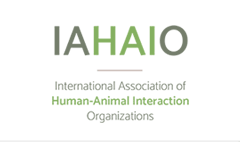Abstract
As incidences of substance use disorders (SUD) increase in the wake of the COVID-19 pandemic, there is a need for more effective treatment approaches. Further, treatment approaches currently available struggle to retain patients during the period of substance withdrawal in early treatment due to patients’ withdrawal symptoms including increased feelings of anxiety and depression. Withdrawal symptoms have been linked to dysregulated cortisol concentrations present in this period. Psychotherapy incorporating equine interaction (PIE) has emerged in other populations as a treatment that decreases cortisol concentrations and improves treatment retention. The present study investigated the impact of 4 weeks of PIE on 10 (n = 10) withdrawing patients in a residential substance abuse treatment program. A survey instrument consisting of 17 questions tracking perceived anxiety and depression was given prior to the first week of PIE and at the end of the fourth week of PIE. On weeks 1 and 4 of PIE, heart rate and salivary cortisol measures were taken. Paired t-tests were performed to determine differences in survey responses and the mixed procedure was used to determine differences in heart rate and cortisol concentrations. The Spearman correlation was used to determine the association between survey responses and heart rate and cortisol measures. Significance was considered at P ≤ 0.05 and tendencies were reported at P ≤ 0.1. Significant improvements were seen in 24% of the survey questions analyzing nervousness (P = 0.01), control of worry (P = 0.05), trouble relaxing (P = 0.02), and irritability (P = 0.04), and tendencies toward improvements in another 17% of measures concerning control of one’s life (P = 0.10), worry (P = 0.10), and fear (P = 0.10). Patient heart rates were higher following the fourth week of PIE compared to the first week of PIE (P = 0.02), and no significant changes in cortisol concentrations were seen (P = 0.20). These results, in addition to therapist observations of limited activity levels in the first week of treatment, indicate potential increased activity and participation through the 4 weeks of PIE. This improvement is in addition to improvements in survey responses associated with severity of depression and anxiety during the withdrawal period, indicating PIE’s effectiveness in SUD treatment.
Recommended Citation
Friend, Molly M.; Nicodemus, Molly C.; Cavinder, Clay; Lemley, Caleb; Prince, Pauline; Cagle-Holtcamp, Katherine A.; and Swanson, Rebecca M.
(2024)
"Impact of Equine Interaction during Psychotherapy on Anxiety and Depression for Residential Treatment Program Patients Experiencing Substance Withdrawal,"
People and Animals: The International Journal of Research and Practice: Vol. 7
:
Iss.
1,
Article 3.
Available at:
https://docs.lib.purdue.edu/paij/vol7/iss1/3
Included in
Alternative and Complementary Medicine Commons, Animal Studies Commons, Cognition and Perception Commons, Counseling Psychology Commons, Other Animal Sciences Commons, Other Psychiatry and Psychology Commons


